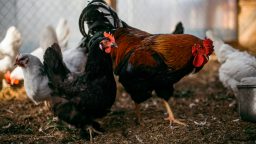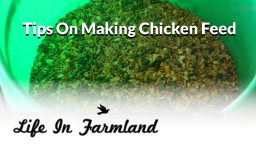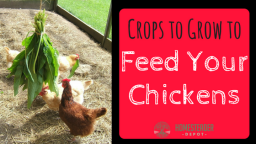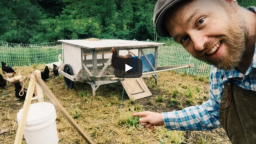Chickens can be messy and needy. They throw their food all over the place and then squawk at you until you give them more. This is no reason not to place a chicken coop in your backyard though. They do give you plenty of eggs and some meat. And chickens can make interesting companions, even though they aren’t quite as cuddly as cats and dogs – as long as you keep them happy, that is. The best way to do this is with a no-waste chicken feeder.
Why Do You Need A No Waste Chicken Feeder?
We’ve already mentioned the fact that chickens are messy. No matter how hard you try to keep their food contained, they toss it all over the yard. Even if you place a metal pan under their trough, they’ll still find a way to make a mess. It’s just how they are – until you give them a no waste feeder. This feeder is designed to keep the chicken feed in one place, right where it belongs. You won’t be woken up by hungry chickens in the morning, as they’ll always have enough to eat right under their beaks.
The Supplies That You Need
Gathering your supplies is the first step to making one of these feeders. You’ll need some PVC piping, both straight sections (which should be the same length) and an elbow piece, as well as two caps. You’ll also need a Mason jar lid and seal. Since the pipes will fit together, you don’t really need to adhere to them, but you could if you wanted to. It’s all up to you. It should hold together just fine by itself. You’ll also need a small saw in order to cut a hole in the bottom pipe so that the chickens can get to their feed. Otherwise, you’ll just have some random pipes stuck together with chicken feed in them.
Putting the Feeder Together
Building the feeder is easy. Start by slicing into the piece of pipe that’s going to be on the bottom. This is the trough. You’ll need to make it big enough for the chickens to get into, but not so big that they can make a huge mess all over again. A horizontal piece that’s roughly two inches wide by around 10 inches long will work nicely. However, this is up to you.
Once you have the feeding hole cut into the pipe, place one of the caps at the end. This will be the piece of the feeder that sits parallel to the ground. Connect the elbow piece of pipe to the other end. Put the Mason jar lid and seal inside of the pipe at the place where the elbow meets the bottom pipe. The lid and seal will keep the feed from flowing down uncontrollably, making a mess.
Next, attach the other long, straight piece of pipe to the other end of the elbow joint. It will stick straight up vertically. This is the end that you’ll be pouring the feed into. Place the other cap on the end of this piece of pipe in order to prevent water and other things from getting into the feed. You can remove it when you need to add more.
Feeding the Chickens
Prop the no waste chicken feeder up against the side of the chicken coop or the fenced-in area. If you want to tie it in place, feel free to do so. Pour some feed into the top pipe and then remove the Mason jar lid so that it flows into the other part of the feeder. Your chickens will always have plenty of food this way.
See an example from our buddy at Green Power Farm.
https://youtu.be/IapmzdzGFaw




